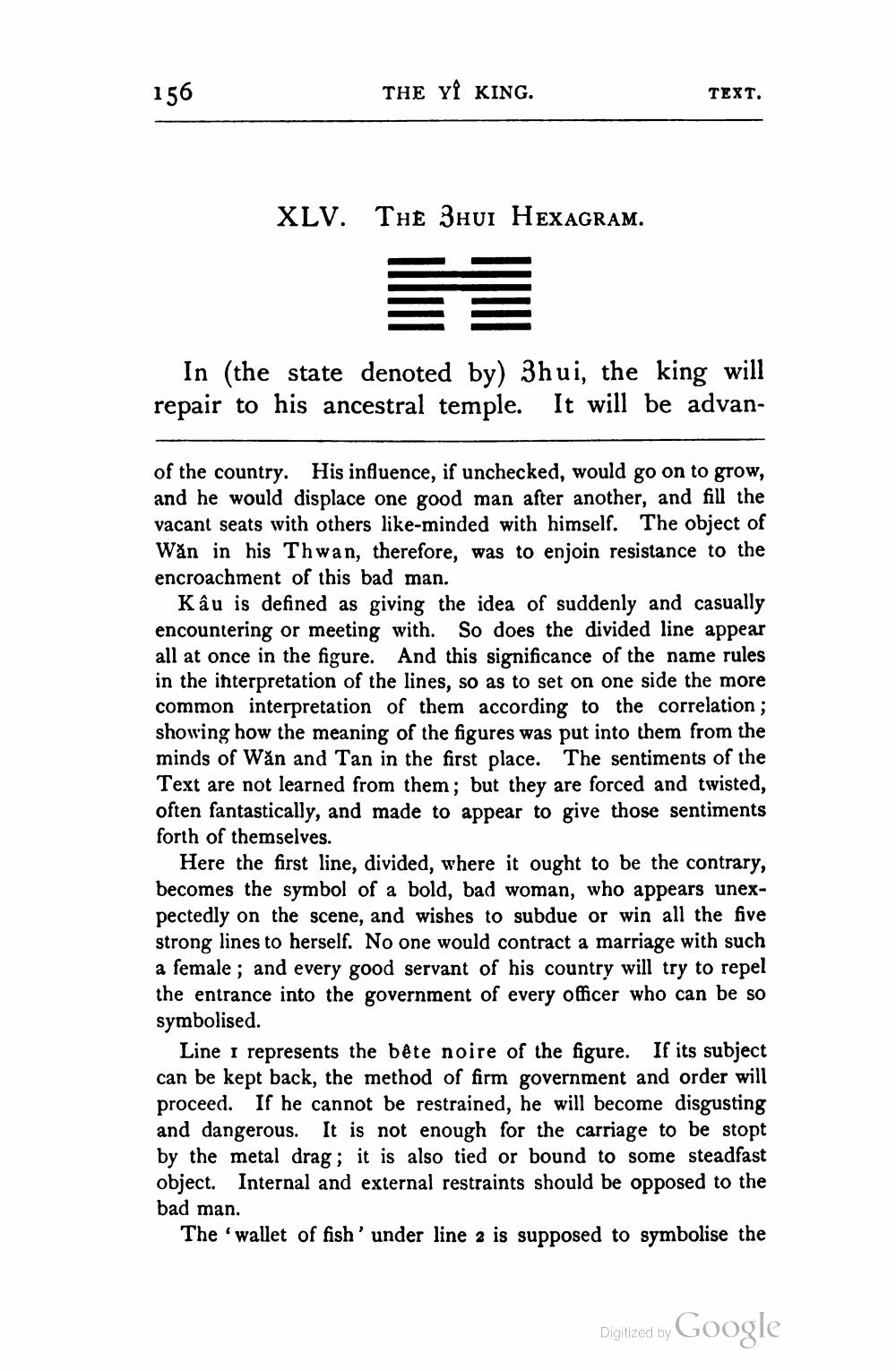________________
156
THE YÎ KING.
TEXT.
XLV. The Zhvi HEXAGRAM.
In (the state denoted by) 3hui, the king will repair to his ancestral temple. It will be advan
of the country. His influence, if unchecked, would go on to grow, and he would displace one good man after another, and fill the vacant seats with others like-minded with himself. The object of Wån in his Thwan, therefore, was to enjoin resistance to the encroachment of this bad man.
Kâu is defined as giving the idea of suddenly and casually encountering or meeting with. So does the divided line appear all at once in the figure. And this significance of the name rules in the interpretation of the lines, so as to set on one side the more common interpretation of them according to the correlation; showing how the meaning of the figures was put into them from the minds of Wăn and Tan in the first place. The sentiments of the
Text are not learned from them; but they are forced and twisted, often fantastically, and made to appear to give those sentiments forth of themselves.
Here the first line, divided, where it ought to be the contrary, becomes the symbol of a bold, bad woman, who appears unexpectedly on the scene, and wishes to subdue or win all the five strong lines to herself. No one would contract a marriage with such a female ; and every good servant of his country will try to repel the entrance into the government of every officer who can be so symbolised.
Line i represents the bête noire of the figure. If its subject can be kept back, the method of firm government and order will proceed. If he cannot be restrained, he will become disgusting and dangerous. It is not enough for the carriage to be stopt by the metal drag; it is also tied or bound to some steadfast object. Internal and external restraints should be opposed to the bad man.
The 'wallet of fish' under line 2 is supposed to symbolise the
Digitized by Google




